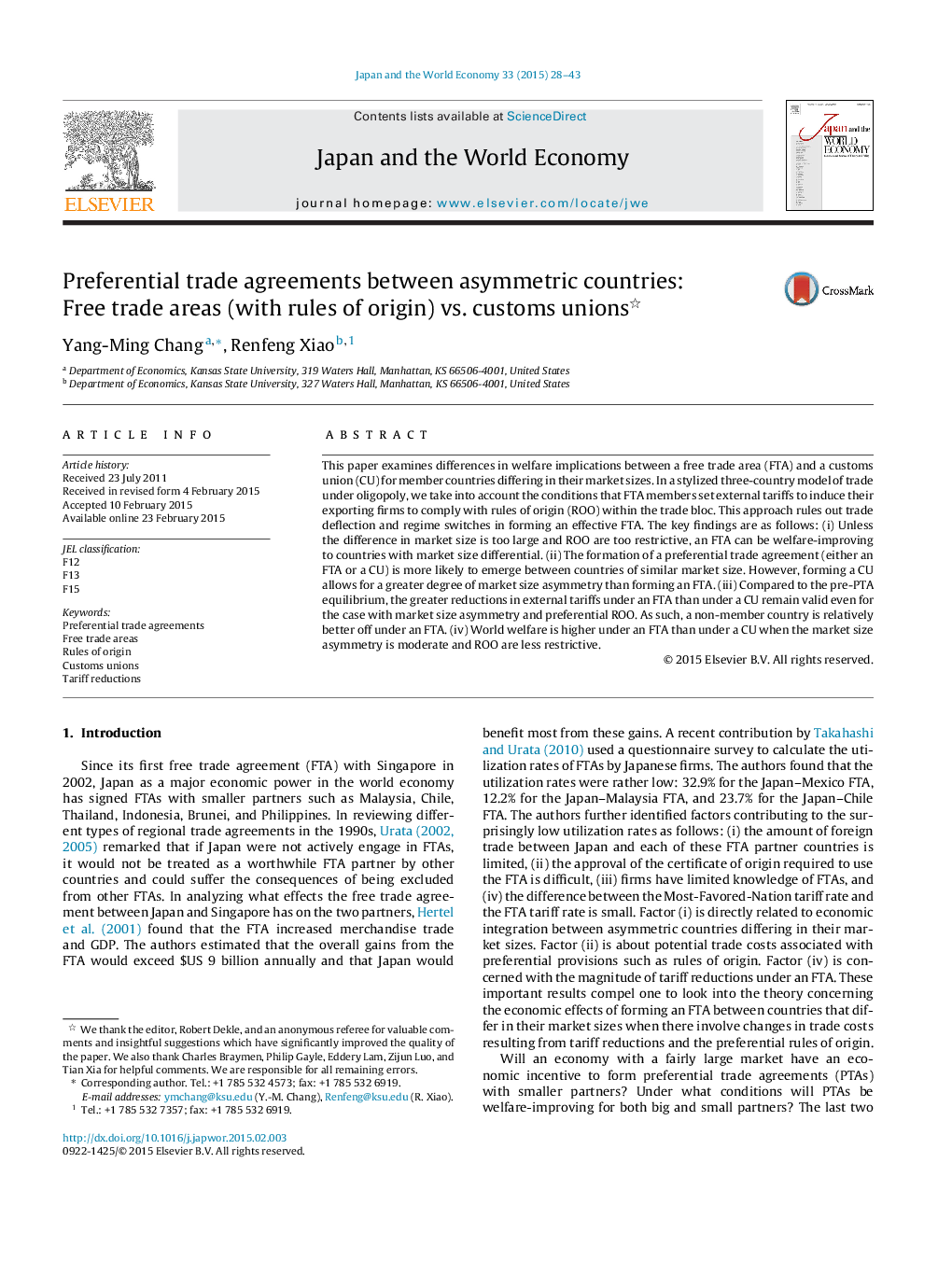| Article ID | Journal | Published Year | Pages | File Type |
|---|---|---|---|---|
| 5086068 | Japan and the World Economy | 2015 | 16 Pages |
â¢Forming an FTA (with ROO) can be welfare-improving to countries with market size differential.â¢Countries of similar market size are likely to form a preferential trade agreement.â¢Forming a CU allows for a higher degree of market size asymmetry than forming an FTA.â¢External tariff reductions are greater under an FTA than under a CU.â¢World welfare is likely to be higher under an FTA than under a CU.
This paper examines differences in welfare implications between a free trade area (FTA) and a customs union (CU) for member countries differing in their market sizes. In a stylized three-country model of trade under oligopoly, we take into account the conditions that FTA members set external tariffs to induce their exporting firms to comply with rules of origin (ROO) within the trade bloc. This approach rules out trade deflection and regime switches in forming an effective FTA. The key findings are as follows: (i) Unless the difference in market size is too large and ROO are too restrictive, an FTA can be welfare-improving to countries with market size differential. (ii) The formation of a preferential trade agreement (either an FTA or a CU) is more likely to emerge between countries of similar market size. However, forming a CU allows for a greater degree of market size asymmetry than forming an FTA. (iii) Compared to the pre-PTA equilibrium, the greater reductions in external tariffs under an FTA than under a CU remain valid even for the case with market size asymmetry and preferential ROO. As such, a non-member country is relatively better off under an FTA. (iv) World welfare is higher under an FTA than under a CU when the market size asymmetry is moderate and ROO are less restrictive.
